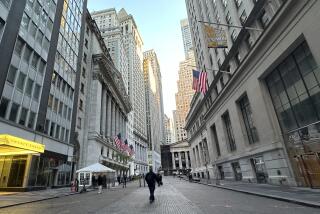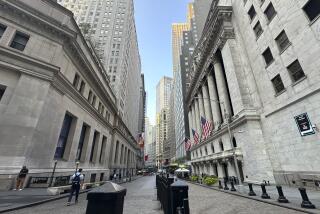Leading Indicators Up 1% in June; Economists Cautious on Prospects
- Share via
WASHINGTON — The government’s main economic forecasting index jumped a healthy 1% in June, the Commerce Department reported Wednesday, although economists generally agreed that the prospects for a sudden new surge of growth are less promising than they seem.
The rise in the index of leading indicators, the strongest since a 1.3% gain in January, was somewhat tempered by the fact that the comfortable 0.7% increase reported for May was revised sharply downward to 0.1%.
Commerce Secretary Malcolm Baldrige greeted the report with caution, declaring that it is “consistent with projections of stepped-up economic growth during the second half.” But he warned that “we need a stronger performance in the leading index to realize our growth targets.”
Growth Forecast Lowered
The Reagan Administration this week lowered its aim substantially from 4% growth to 3% for all of 1985--a target that would still require 5% growth for the final six months of the year. Many economists outside government now believe that target is out of reach.
But a separate government report Wednesday showing that factory orders rose a substantial 1.9% in June, after a strong 2.1% increase in May, was a hopeful indication that growth in the second half of the year would be stronger than the anemic 1% registered during the first six months.
White House spokesman Larry Speakes took both reports as justification for Administration optimism. “This ringing economic news on the future bodes well for renewed growth and continued expansion in the last half of 1985,” he said.
That was hardly a consensus view, however. Robert Gough of Data Resources, an economic forecasting firm based in Lexington, Mass., noted that the main contributors to the June rise were volatile components such as new business formations, which gained 0.5% after a 0.4% drop in May, or “artificial” components such as the money supply--up 0.4% in “a conscious effort by the Federal Reserve to bring interest rates down,” he said.
‘Mixed Message’
“It’s a mixed message . . . tempered with the realization that the most stable components of the index, such as plant and equipment contracts or building permits, were not the main reasons for the increase,” Gough added. “It’s good news but, unfortunately, not the mix of good news you’d like.”
Jerry Jasinowski, chief economist for the National Assn. of Manufacturers, greeted the report as a welcome sign of “continuing gains in capital spending and looser credit conditions during the latter part of the year.”
But he deplored as an adverse development a 0.1% decline in orders for consumer goods, which he said suggests that “there will be no major increase in inventory investment in the near future.”
One factor in the sharp revision downward of the May index was the fact that the component that measures inventory changes was not available when the index was reported initially. The inventory component, also unavailable Wednesday for June, turned out to have been a negative 0.5% in May.
That confirmation of inventory retrenchment last spring could be a bullish sign for the future, noted Allen Sinai, chief economist for Shearson Lehman Bros.
Donald Ratajczak, director of the economic forecasting project at Georgia State University, agreed that the inventory component of the index often gives misleading signals. “If it falls, it is registered as a negative, and in the short term that is true. But in a longer period of time, a fall in inventories can be beneficial because it means manufacturers can soon start to raise production and sell from the factory instead of from the warehouse.”
More to Read
Inside the business of entertainment
The Wide Shot brings you news, analysis and insights on everything from streaming wars to production — and what it all means for the future.
You may occasionally receive promotional content from the Los Angeles Times.










